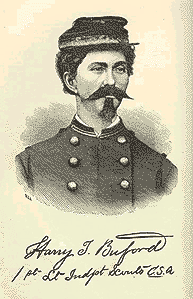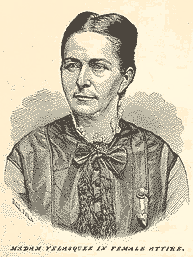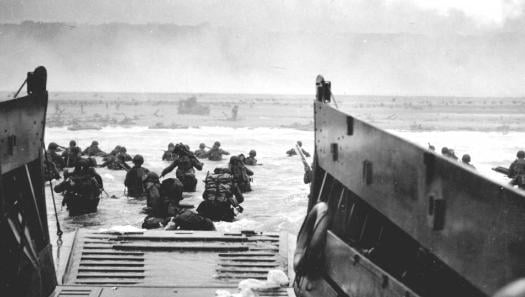Military & Veterans News
Vet News: The Case of the ‘Bogus’ Lieutenant
Tech. Sgt. Phillip E. Copeland, USAF

Thanks to the University of North Carolina Library for the photographs. Materials are accessible at no cost through the UNC Library Documenting the American South project. |
WASHINGTON, March 26, 2001 -- Bessie Coleman would not be deterred. She spent her life following her dream and eventually died because of it, but she blazed a path that women aviators have followed ever since. Born in 1893, she was one of 12 children of a dirt-poor Texas cotton-farming family. At a time when African-Americans were regularly prevented from voting by literacy tests and denied even a basic education, Coleman managed to graduate from high school and then followed two of her older brothers to Chicago. Even the urban North offered only limited opportunities to women of color. Coleman worked as a manicurist, but airmen returning from World War I sparked her imagination. After that, there was no stopping her, even when she could find no one in the United States who would teach her to fly. In November 1920, Coleman headed to France. Seven months later, she became the first African-American woman to earn an international pilot's license from the Federation Aeronautique Internationale. She returned to the United States and became an immediate sensation. "Brave Bessie" traveled the country in a barnstorming tour, wowing crowds, and inspiring African-American women and men alike. For the next five years, Coleman used her notoriety to encourage African-Americans to take up flying, reminding them nothing was impossible. She even refused to perform at venues that did not allow blacks. She repeatedly stated her dream was to save enough money to open her own flying school -- this one solely for African-Americans. By all accounts, she was rapidly approaching that goal. Tragically, Coleman fell to her death April 30, 1926, while a passenger on a reconnaissance flight to find a site for an upcoming air show in Jacksonville, Florida. More than 10,000 mourners grieved at her funeral in Chicago. "There is reason to believe that the general public did not completely sense the size of her contribution to the achievements of the race as such," an editorial in the Dallas Express stated.In the years since her death, her exploits and achievements have not been forgotten. In 1992, the U.S. Postal Service issued a stamp in her honor, and the Federal Aviation Administration named one of its downtown Washington buildings the Bessie Coleman Conference Center. SOURCE: American Forces Press Service via Veterans News & Information Service |
Throughout her childhood, Loreta was inspired by the story of Joan of Arc. She dreamed of being a war hero and had a growing obsession to be a man. As a child, she would dress as her male role models and heroes, such as Columbus and Capt. James Cook.
On April 5, 1856, Loreta married a U.S. Army officer whom she referred to only as "William" in her memoirs. Her family disowned her. She was a dutiful wife and mother, but after the deaths of her three children, her grief revived her childhood notions of pursuing battle.
William reluctantly resigned his commission from the U.S. Army and hesitantly joined the Confederate army at the behest of Loreta and his father. Meanwhile, Loreta continued to possess this burning desire for a war to happen and a stronger inclination to dress as a soldier and engage in battle.
New Identity
William tried to discourage Loreta by allowing her to disguise herself in one of his Confederate uniforms and accompanying him in a local bar full of men. William assumed that once Loreta saw how vulgar men acted in the absence of women, she would not be so inclined to pursue her desire. While at the bar, two dear male friends of the couple came up to greet them. They did not recognize Loreta. This boosted her confidence of her new male identity.
On April 8, 1861, William went off to war thinking Loreta had changed her mind about battle. However, the moment he was gone, she pursued her dream of war.
With the help of a good tailor, wire body shields and loose undergarments, a handsomely dressed Confederate soldier stood in the mirror ready for a gallant new life. All evidence of a beautiful, slender woman vanished. Now, the aspirations of a child influenced by Joan of Arc were to be realized.
Loreta neatly packed a trunkful of Confederate officer uniforms. On the lid of the trunk were the shiny letters of her new name -- "Lieutenant H.T. Buford, C.S.A."
She swore a male friend to secrecy and with his help fine-tuned her act -- the appearance and mannerisms of a male Confederate officer ready for combat. After that careful preparation, her plan was to recruit a battalion and present it to her unsuspecting husband for his command.
At her own research and expense, Loreta succeeded in recruiting a battalion of men in the name of the state of Virginia. She established a regiment and a chain of command beneath her that included two subordinate officers, a sergeant and a corporal. A friend in Memphis provided transportation for her troops and helped prepare them for war.
Astonishing Revelation
Buford and the recruits met up with William in Pensacola. He didn't recognize his disguised wife. In confidence, she revealed herself to her profoundly astonished and aggrieved husband. William knew she would just try somewhere else if he sent her packing. He took command of Buford's troops and started to train them.
Loreta, as Lieutenant Buford, went off to New Orleans to get supplies. While there, a terrible message arrived. The commander was dead, killed when a weapon exploded in his hands during training. The unfortunate death of her husband left Loreta alone in the war ahead -- and motivated even more by the secret fact she was a widow.
From the skirmish at Blackburn's Ford on July 21, 1861, until the autumn of 1863, Loreta Velazquez pursued war as both a male Army officer and female spy. Few knew the truth about either role.
As Lieutenant Buford, Loreta and her fellow soldiers took part in such hard-fought battles as Bull Run, Ball's Bluff, Fort Donelson, and Shiloh. Although her charade was discovered other times, it seems Buford would simply vanish or be "reassigned."
Buford would take leaves between battles. Loreta used those times to doff the uniform for dresses and go into enemy territory to spy as a social butterfly. She would later write of the time she met President Lincoln, saying she greatly admired the man, but not his politics.
After two and a half years of faithful service, Lieutenant Buford retired from duty. The story about Loreta's disguise had become too well known. She kept up the fight from the autumn of 1863 until the end of the war as Madame Velazquez, full-time Confederate spy. Loreta gathered information in the north and passed it to the south. No Union opponent ever saw through her deception.
While many women on both sides of the war served as spies, Loreta Velazquez is the only one known to have served disguised as a man at the same time and for so long. Soldiers who served beside Buford attested to the lieutenant's valor, integrity, ability, and conduct becoming a gentlemanly army officer.
For those who want to read about this story in much greater detail, visit https://docsouth.unc.edu/fpn/velazquez/velazquez.html
SOURCE: United States Air Force via Veterans News and Information Service.




